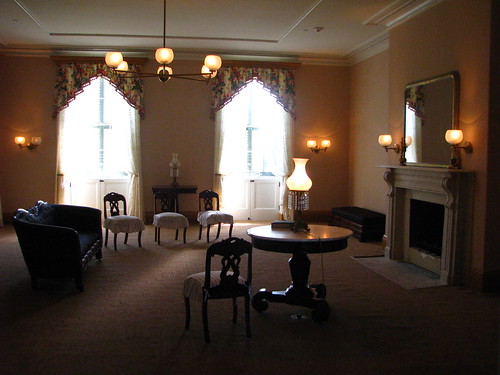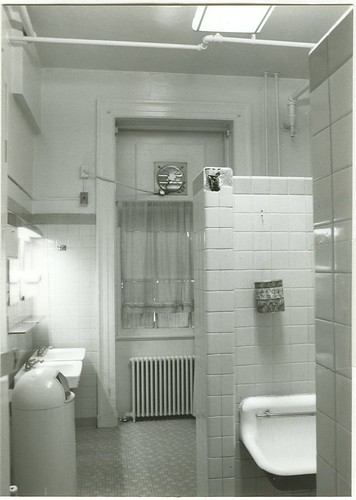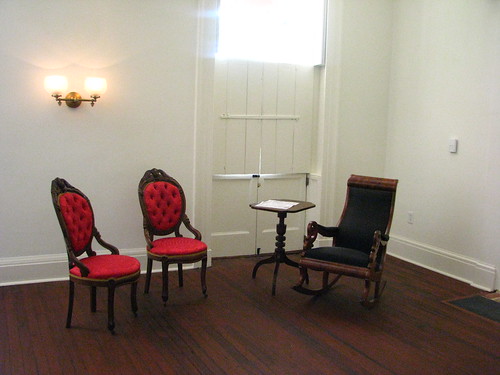By Erin Carlson Mast
This is the 8th of 10 installments of “100 Things to Know about President Lincoln’s Cottage.” Today’s list looks at 10 ways the Cottage was used since the first section was built in 1842-3 up through 2000 when it was vacated by the Home so that the National Trust could begin research and restoration. Previous posts in this series may be viewed under the category “100 Things to Know.”- Private home of George W. Riggs–The house was first built for George Washington Riggs, whose business partner, William Corcoran, owned the adjacent estate. The two formed what was known for over a century as Riggs Bank, where Lincoln banked. The bank is now part of PNC.
- First dormitory for the “Military Asylum”–When the “Military Asylum” was first founded, the Cottage was used as a temporary residence while “Scott Hall” (now Sherman Building) was being built.
- Private residence of the Governor, Interim Governor, or Deputy Governor of the “Soldiers’ Home”–Throughout the early history of the Cottage, the various heads or temporary heads of the Home occupied the Cottage on and off as a private residence.
- Seasonal residence of Presidents Lincoln, Hayes, and Arthur–These three presidents each used the Cottage as a seasonal residence during their terms in office. (Note: Buchanan is believed to have occupied Quarters 1, adjacent to the Cottage.)
- Infirmary–Post-Civil War, the Cottage was temporarily used as an infirmary for wounded and disabled soldiers.
- Guest House–In the mid-20th century, guests of residents of the Home could stay the night in the Cottage. When restoration began, there were still signs hanging on the backs of doors that listed lodging rates of around $5.00 per person per night. (Note: This use has caused occasional confusion amongst researchers following leads about “Riggs House,” which was a hotel at 15th and G NW downtown in the late 19th century.)
- Dormitory for Soldiers’ Home Band–The veterans at the Soldiers’ Home who made up the military marching band had the Cottage as their home for about 20 years in the first few decades of the 20th century. The shift to using the Cottage as a dormitory in the 20th century continued thereafter, and led to the addition of partition walls, converting half the parlor into an institutional bathroom, and installing sinks, towel bars, and mirrors in most of the rooms by the mid-20th century. [Top image: Room 108 as it appeared in 1985. Bottom image: Room 108 today.]
- First Women’s Dormitory–In the mid-20th century, the Home began admitting women veterans to the Home and those first few women lived in the Cottage.
- Dormitory Rooms and “Lincoln Lounge” for the “United States Soldiers’ and Airmen’s Home”–By the 1970s and early 1980s, the Cottage continued to be used as a guest rooms and also began to be used as staff offices for the Home. The rooms the Lincolns would have known as the library and drawing room were converted into a bar for members of the Home. [Top image: Room 107 as it appeared in 1985. Bottom image: Room 107 today.]


- Administrative and Public Affairs Offices for the Home–The last use of the Cottage by the Home was as public affairs offices. Up to this point, additions from the 20th century adaptive uses included linoleum tile flooring or green carpeting in all the rooms, a hanging sprinkler system, electrical conduit and mid-century lighting fixtures, mounted fans, radiators, office signage, etc. that all had to be removed during the restoration process beginning in 2000. One of the first steps was to remove the numerous partition walls that had been added over the last century, in order to bring the Cottage floorplan back to it’s 19th century layout.


